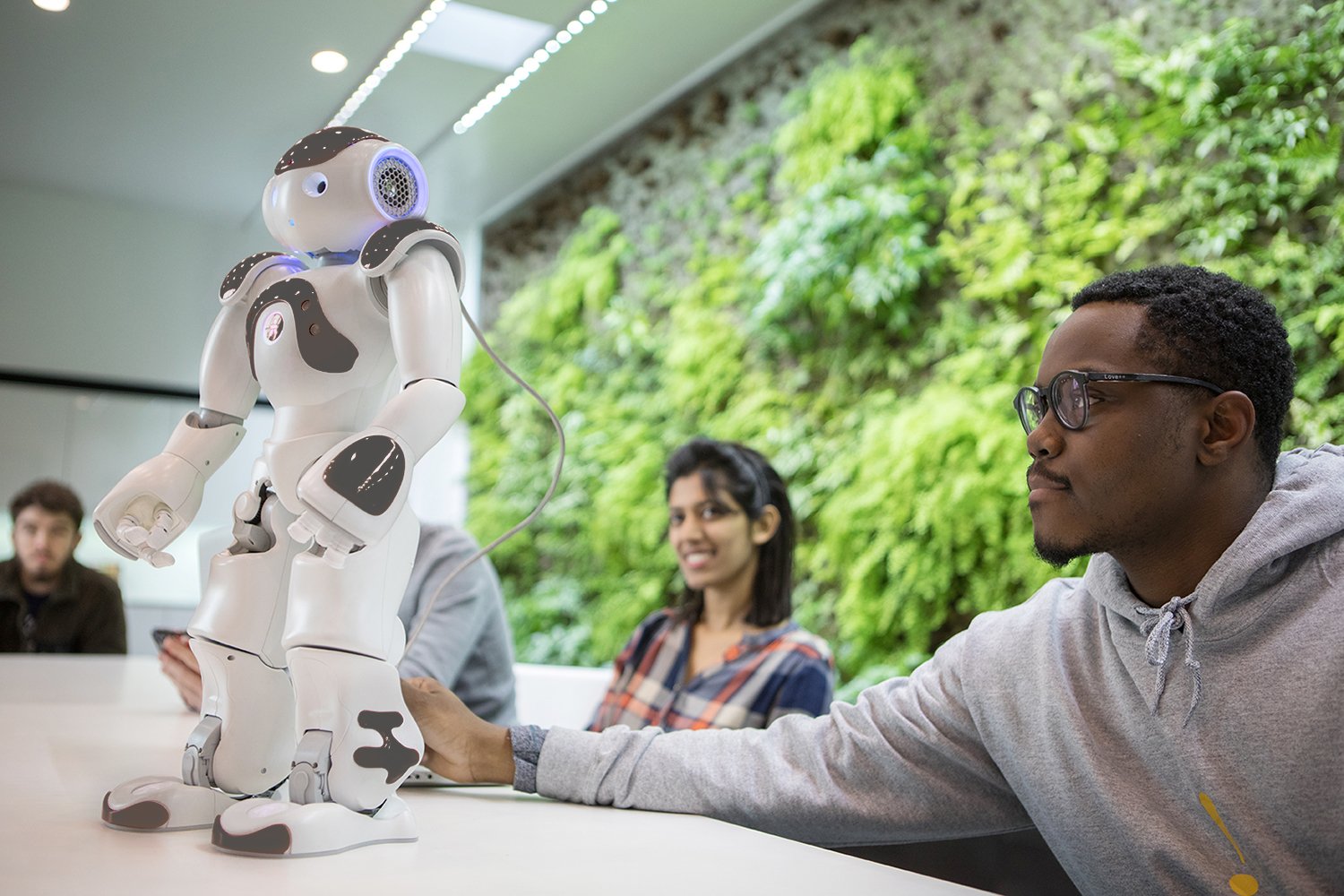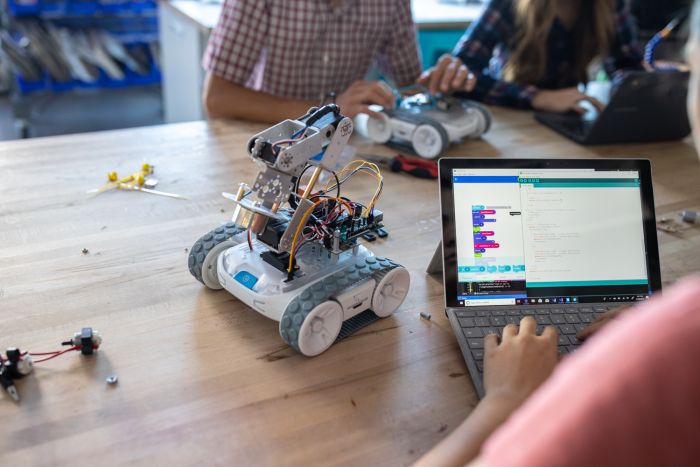RobotLAB Blog
Everything You Need To Know About Robotics in Businesses
Introducing Students to Careers in Robotic Engineering

According to a study from the McKinsey Global Institute, robots may replace human workers in as many as 800 million jobs by 2030. Over the next 12 years, there will be a higher demand than ever before for robotic engineers. After all, someone needs to design these robots and be able to fix them if they break down. Learning robotics can help students succeed in the future by preparing them to enter an expanding field that will require an increasingly difficult skill set.
It’s important to teach students about robotic engineering in the classroom, not just outside of it. Many students may not know about the opportunities that could be available to them, or how to get involved with robotic engineering.
Perhaps the most exciting way to get students involved with robotics is to have a lab or hands-on lesson. Start small, and build progressively complex lessons from there.
- 0 Comments
- Mar 12, 2020 10:00:00 AM
- Posted by Natalia Galvis
- Topics: EdTech, STEM, 21st Century Classroom, Technology, Engineering, Innovation, STEMchat, Edchat, Computational thinking
An Entrepreneurial Mindset Beats Coding Skills
Computer coding may be valuable in the current marketplace, but for long-term success, students need to develop entrepreneurial mindsets.

- 0 Comments
- Mar 11, 2020 10:00:00 AM
- Posted by Natalia Galvis
- Topics: EdTech, STEM, 21st Century Classroom, Coding, Technology, Innovation, STEMchat, Edchat, Computational thinking
What will AI and robotics mean for higher education?
The world around us is getting “smarter.” Artificial intelligence (AI), data, and natural language processing have enabled Alexa, Siri, Pandora, Netflix, Facebook, Google, Amazon, Waze, and other platforms to become part of our lives. Both AI and robotics are projected to have a massive impact on the global economy. While anticipated improvements in GDP and efficiency are positive, some fear that jobs will be lost through automation. What will AI and robotics mean for higher education? Will automation affect colleges and universities?

- 0 Comments
- Nov 27, 2019 10:30:00 AM
- Posted by Natalia Galvis
- Topics: EdTech, Education, Computer Science, Edchat, Computational thinking
Computer Science in K-12 Classrooms Needs to Catch Up
It’s estimated that in the next decade the number of computer science jobs in the U.S. will outnumber qualified people by 1 million. That’s 1 million jobs for the taking that Americans will miss out on because of inadequate skill sets. Despite this, only 10 percent of K-12 classrooms have computer science programs. So what gives?

- 0 Comments
- Nov 26, 2019 10:00:00 AM
- Posted by Natalia Galvis
- Topics: EdTech, Education, Computer Science, Edchat, Computational thinking
Why Computer Science Should Be a High School Graduation Requirement
Computing is an integral part of every aspect of our lives, from how we connect with each other to the way we do our jobs and get around. Computing is the number one source of all new wages in the U.S. economy and there are currently 500,000 open computing jobs across the country.

Yet, according to a Code.org report, only 15 states require all high schools to offer computer science. Many parents, educators, and education institutions are calling for computer science to be a high school graduation requirement. As one commentator pointed out: Schools teach math to students regardless of whether they want to become mathematicians because it is foundational. The same is true of computer science. There are a number of benefits to taking computer science in high school.
- 0 Comments
- Nov 18, 2019 10:30:00 AM
- Posted by Natalia Galvis
- Topics: EdTech, STEM, Education, Computer Science, Coding, STEMchat, Edchat, Computational thinking
Computational Thinking Across the Curriculum
As defined by Jeannette Wing, computational thinking is “a way of solving problems, designing systems, and understanding human behavior by drawing on the concepts of computer science.” To the students at my school, it’s an approach to tackling challenging questions and ambiguous puzzles. We explicitly integrate computational thinking into all of our classes, allowing students to draw parallels between what they’re learning and how they’re approaching problems across all disciplines.
Our students rely on four computational thinking skills, as well as a set of essential attitudes.

- 0 Comments
- Aug 13, 2019 10:00:00 AM
- Posted by Natalia Galvis
- Topics: EdTech, STEM, STEMchat, Edchat, Computational thinking
Relevant Posts
- Augmented Reality: A Tool for Teaching Students Robot Programming
- Fostering Innovation Through Youth Education in STEM and EdTech
- How Parents Can Foster STEM Learning Beyond the Classroom
- How Robotics Cultivates a Deep Understanding of Mathematics in Students
- RobotLAB Receives EDTech Chronicle 2023 ‘BESTIE’ Award for Landmark Partnership with American Samoa Dept. of Education.
Subscribe to Email Updates
-
I Want To Learn MoreADDITIONAL INFORMATION
